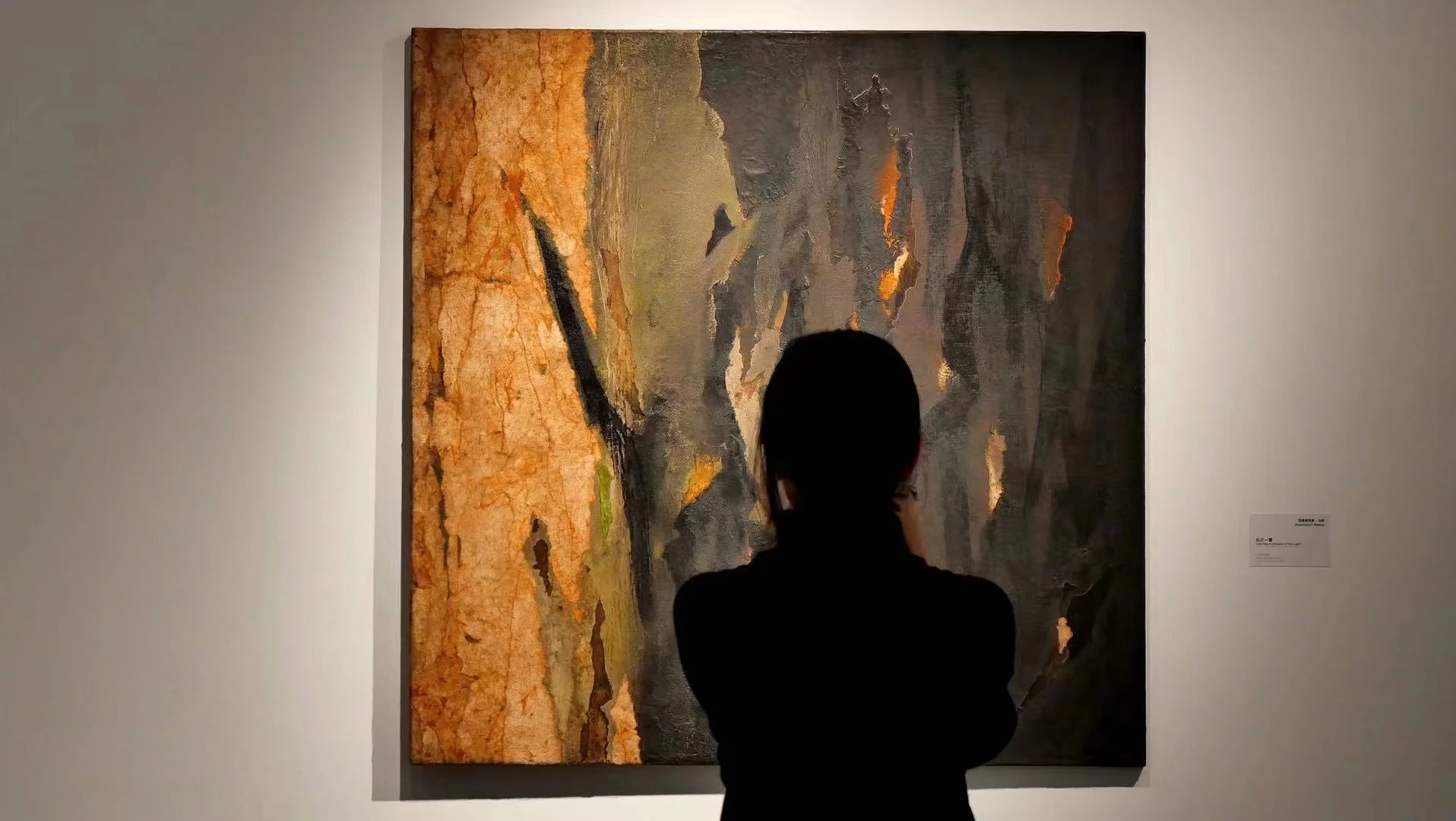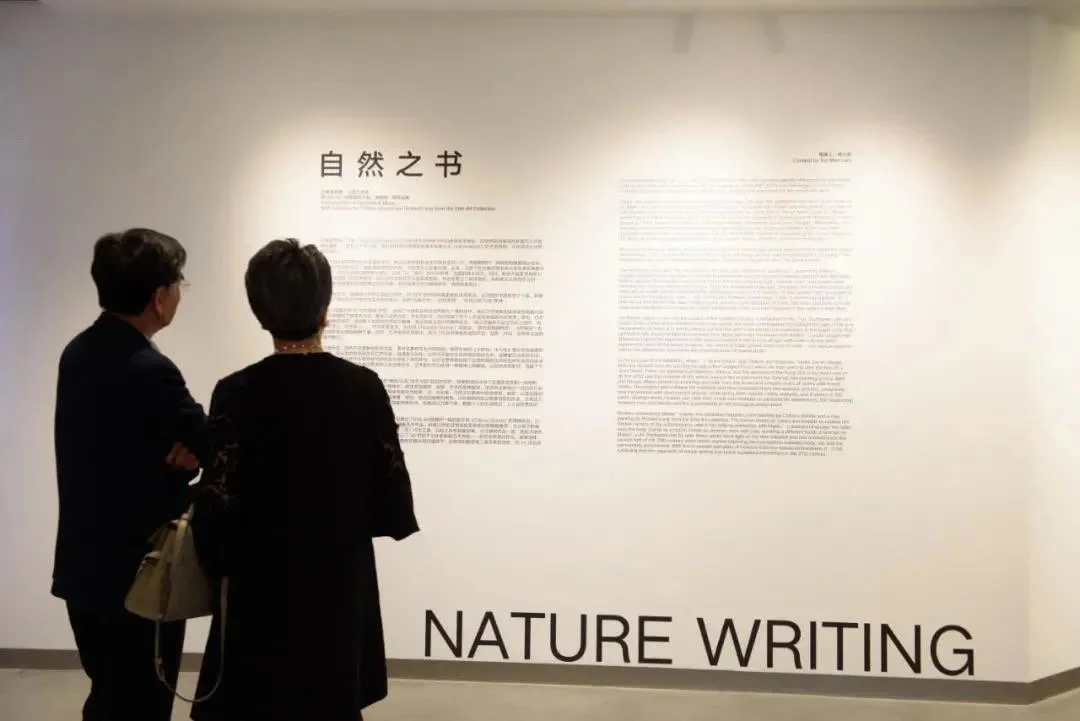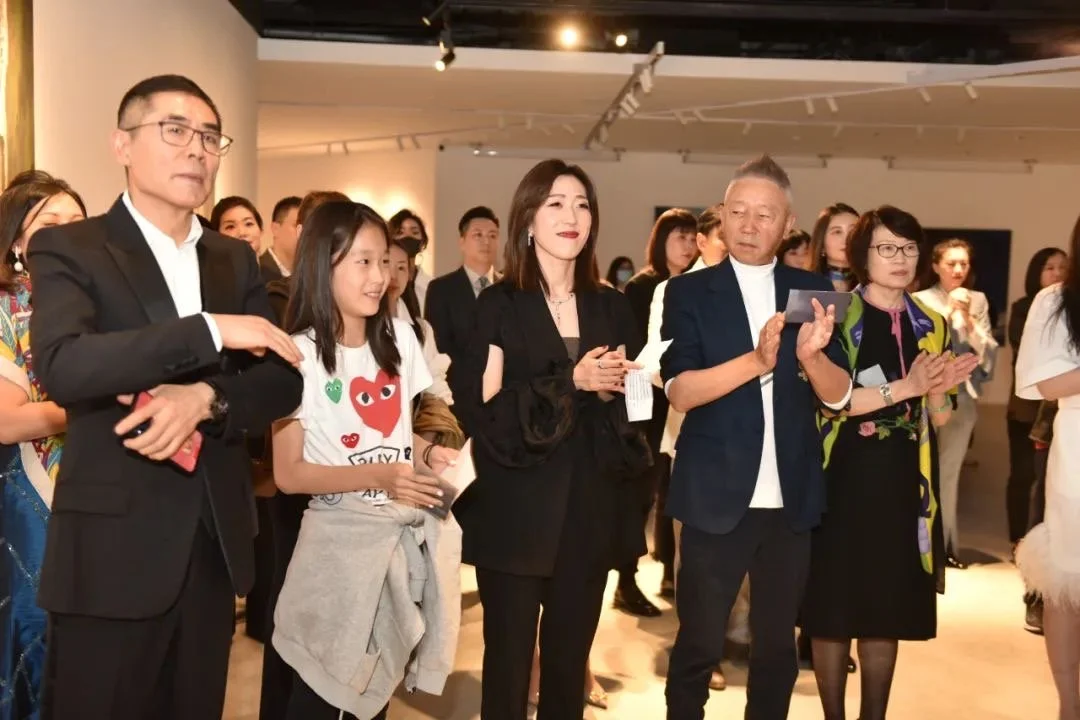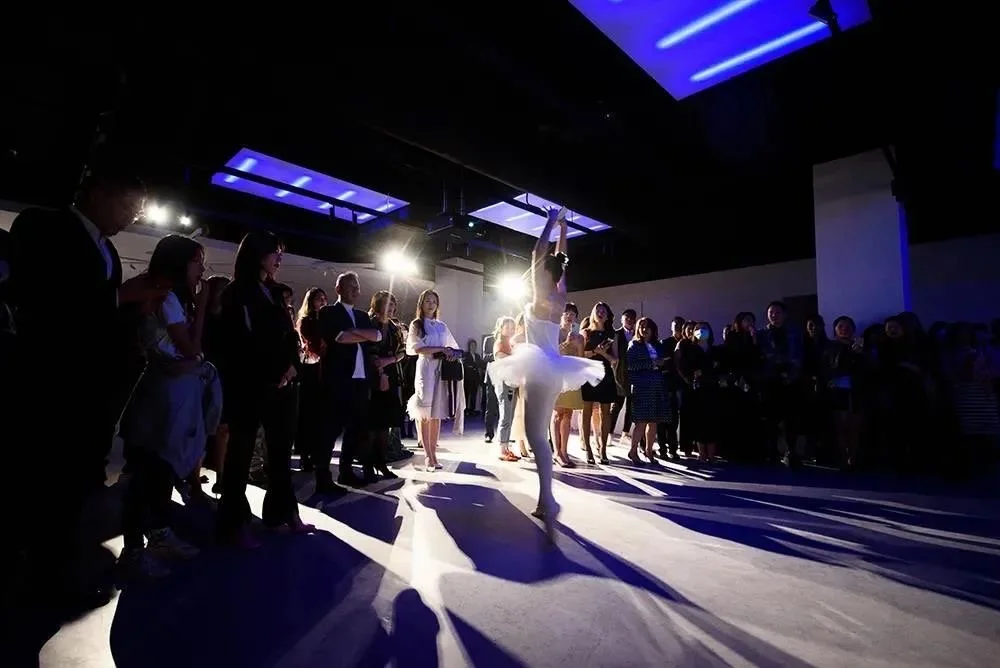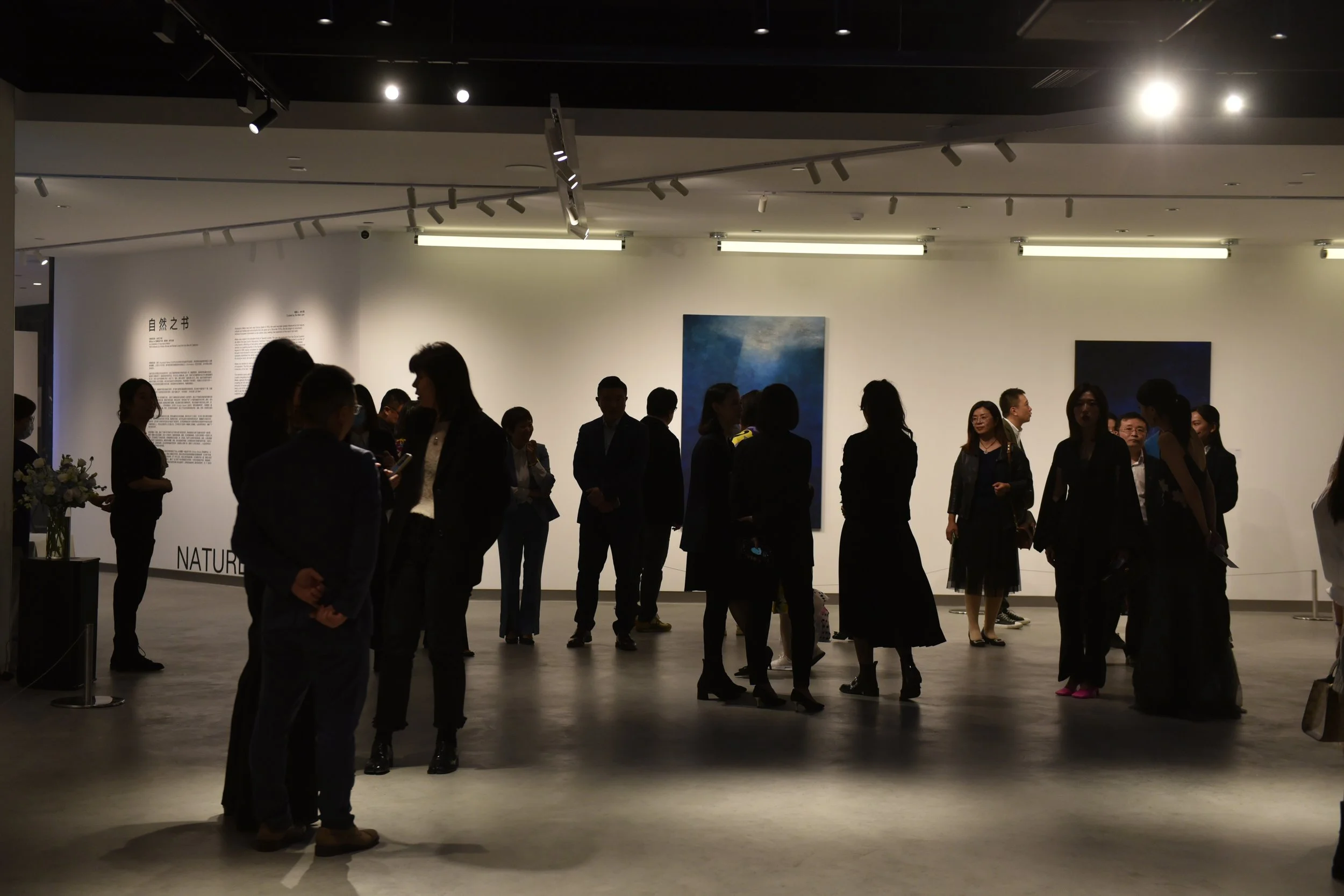自然之書
Nature Writing
中國青島 Qingdao, China, 2021
阿桑普西奧.馬修藝術展
暨Elite Art 館藏塩田千春、理查德.朗作品展
Art Exhibition of Assumpció Mateu
With Artworks by Chiharu Shioda and Richard Long from the Elite Art Collection
策展人 Curator:林小雯 Sio Man Lam
藝術家 Artist: 阿桑普西奧.馬修 Assumpció Mateu
展覽日期 Exhibition Period:2021. 10. 29 - 2021. 12. 29
主辦及展覽地點 Venue & Organizer:中國青島海信廣場慧特藝術中心 Elite Art Center, Hisense Plaza, Qingdao, China
策展人言 Curatorial Statement
阿桑普西奧.馬修(Assumpció Mateu)1952年出生在西班牙的加泰羅尼亞地區,自幼受到當地自然環境與人文精神的薰陶。上世紀七十年代起,她開始有意識地擁抱歐洲非具象主義(Informalism)的藝術傳統,從中尋求心靈的自由表達。
馬修成長在西班牙社會動蕩的年代,她從巴塞羅那的美術學院畢業的一年,弗朗西斯科.弗朗哥的獨裁統治結束,她在那個時期創作了一批極具批判性的作品,並在藝壇上嶄露頭角。後來,馬修在巴賽羅那中央大學從事繪畫教學的工作,並在1988年取得博士學位,完成了以“感知:顏色與思想”為題的博士論文。同時,她亦開始更多地參與到國內及國際上的藝術展覽,結識當時活躍的藝術家和思想家,並逐漸奠定了其詩意的、非具象主義的創作方向--即不以外在世界的既定圖像為創作對象,轉向探索內在的精神狀態、情感和潛意識。
九十年代至今,她圍繞不同的主題進行創作,但"自然"始終是其最重要的靈感來源。這次她在中國的首個個展,則重點展出了其中四個與自然有關的創作系列,包括"浩瀚之洋"、"內在景觀"、"自然與影"以及"焦林"。
展覽以"浩瀚之洋"及"內在景觀"為始, 呈現了馬修將自身與自然融為一體的創作。透過介乎抽象和具象間的筆觸與構圖,馬修捕捉了海洋的無垠,𣊬息萬變的光影、色彩及形狀,同時反映了其個人豐富而細膩的內在世界。顏色,作為一種抽象的語言,撥動著人類原始的感官與觸角,抵達觀者無意識的精神狀態。 "真正的畫家不是在空間上創作,而是在平面上,在色彩上......" 哲學家魯道夫.史代納(Rudolph Steiner)如是說,"顏色是精神性的",馬修便是一直在運用色彩的原始精神力量。同時,藝術家亦在標題中,提示了作品中探索的諸如聲音、溫度、時間、形體等主觀而抽象的概念。
對馬修而言,自然不僅是她創作的主題,更傳達著有關生命的隱喻。展場中央的《太陽花:生與死》便以黃色和黑色的對恃,突出生命的光明與死亡的滅寂。值得指出的是,這件作品象徵生命的明亮色塊當中,隱藏著藝術家的手印;這些手印,是馬修從青年時代的作品中延續下來的符號,似乎是要將她在那個動盪時期的生命經驗牢牢地印在追求光明的色調之上。而在走過更多的人生歷程之後,藝術家似乎已獲得一種精神上的解脫,以自然界的輪迴,消解了個體生命的無常。
展覽的最後一部份,展出了馬修的"焦林"以及"自然與影"系列的創作。兩者都源自馬修在痛失好友的一段時期,途經一座被火洗禮的森林,在這一片焦林中,她感受到黑暗、寂靜、生靈的集體缺席。正是在這種淘空一切的死亡狀態中,藝術家看見了生命的本質,並將感受轉化為繪畫、詩、光和美。馬修從焦林中撿來枝條、樹皮,以混合媒材的方式創作了這系列的作品。她將材料堆疊、拼貼,組合成抽象的畫面,以枯竭的自然之物譜寫新的樂章,為其註入變化的色彩、質感和旋律。在此詩性的抽象世界當中,觀者得以沉靜下來,默想個人的生命經歷,人與自然界的關係,乃至生態環境的永續問題。
應是次馬修在中國的首展,這次展覽亦特別展出了Elite Art 館藏的一幅塩田千春(Chiharu Shioda)的線畫作品,以及一幅理查德.朗(Richard Long)的粘土抽象藝術作品。前者以色彩及線條探索潛意識的隱秘角落,與馬修的抽象語言有著驚人的相似之處;後者則將身體(手)作為工具,以粘土創作抽象繪畫,與馬修的作品一道,展現大地藝術創作的不同面貌。這些作品並排展示,揭示了 20 世紀下半葉的嶄新藝術傳統——即藝術家透過作品,探索身體、藝術和周圍環境之間的聯繫。當人類經驗與自然環境之間日益脫節,這種深刻地思考二者關係的創作,在 21 世紀無疑找到了新的動力。
Assumpció Mateu was born near Girona, Spain in 1952. Her work has been greatly influenced by the natural, cultural and intellectual environments that she grew up in. Since the 1970s, she has begun to consciously embrace European Informalism as her artistic style, seeking free expression of the soul in her work.
Mateu was raised in the turbulent times of Spanish society. The year she graduated from the Escola Superior de Belles Arts Sant Jordi in Barcelona, Francisco Franco’s dictatorship ended, and she created a number of critical works reflecting on that period, which soon brought her to the fore in the art world. Later on, Mateu worked as a painting teacher in the Faculty of Fine Arts of the University of Barcelona and obtained a doctoral degree in 1988, having completed her dissertation entitled "Perception: Color and Thought". Meanwhile, she became more involved in local and international art exhibitions, met artists and thinkers at the time, and gradually established her artistic language of Poetic Informalism. Instead of representing the images existing in the physical world, her work aims to explore inner mental states, emotions, and subconsciousness.
Mateu has worked on various series since the 1990s but "nature" has always been her most important source of inspiration. This first solo exhibition of hers in China will focus on four nature-related series, including "The Immensity of the Sea", "Interiorised Landscape", "Nature and Shadows" and "The Burnt Forest".
The exhibition starts with "The Immensity of the Sea" and "Interiorised Landscape", presenting Mateu's creation integrating her into nature. Through the brushwork and composition between abstract and figurative, Mateu captures the boundlessness of the ocean, the ever-changing light, shadow, color, and shape, while revealing her rich and delicate inner world. Color, as an abstract language, stimulates the primitive senses and tentacles of human beings and enters the unconscious mind of the viewers. "A true painter does not create in space, but on the plane, in color...," the Philosopher Rudolph Steiner said. "Color is something spiritual". It’s valid to say that Mateu has been employing the primitive spiritual power of color. The artist also hints at such subjective and abstract concepts as sound, temperature, time, and form explored in her works in their titles.
For Mateu, nature is not only the subject of her creation but also a metaphor for life. The "Sunflower: Life and Death" in the center of the exhibition area uses yellow and black confrontations to highlight the light of life and the darkness of death. It is worth pointing out that the artist's handprints are embedded in the bright color that symbolizes life; these handprints continued from those that mark the works from Mateu’s youth suggest her attempt to imprint her experience in that turbulent period in her pursuit of light with colors. As the artist experiences more of the world, however, she seems to have gained some sort of relief -- the reincarnation in nature has allowed her to process the impermanence of individual life.
In the last part of the exhibition, Mateu’s "Burnt Forest" and "Nature and Shadows" series are on display. Both are derived from her passing through a fire-ravaged forest when she was grieving over the loss of a close friend. There she experienced darkness, silence, and the absence of the living. But in the dead void of all, the artist saw the essence of life, which inspired her to transform her feelings into painting, poetry, light, and beauty. Mateu picked up branches and bark from the forest and created series of works with mixed media. She stacked and collaged the materials and then combined them into abstract pictures, composing new movements with dead natural objects, while giving them various colors, textures, and rhythms. In this poetic abstract world, viewers can calm their minds and meditate on personal life experiences, the relationship between man and nature, and the sustainability of the ecological environment.
Besides showcasing Mateu’s work, this exhibition features a line painting by Chiharu Shioda and a clay painting by Richard Long from the Elite Art collection. The former draws on colors and threads to explore the hidden corners of the subconscious, which has striking similarities with Mateu’s abstract language; the latter uses the body (hand) as a tool to create an abstract work with clay, showing a different facet of land art as Mateu’s do. Displayed side by side, these works shed light on the new tradition that has evolved since the second half of the 20th century when artists started exploring the connections between body, art, and the surrounding environment. With the increased alienation of humans from the natural environment, it’s not surprising that this approach of nature writing has found sustained momentum in the 21st century.
媒體報導 Press
